Disclosure: This article contains affiliate links. We may earn a commission from purchases at no extra cost to you, which helps our travel content.
The first time I stepped into a Singapore hawker center, the sensory overload nearly knocked me sideways. Steam billowing from woks, the percussion of metal spatulas against sizzling surfaces, vendors calling out orders in a mix of languages, and that smell – a complex symphony of spices that hits you like a delicious tidal wave. As a Korean-American kid who grew up bouncing between Chicago's urban malls with my mom and adrenaline-fueled adventures with my ex-Navy SEAL dad, I've always lived between worlds. But Singapore's hawker centers? They're a universe unto themselves. During my Foreign Service posting here, I've spent countless evenings navigating these culinary labyrinths, sweating through my diplomatic button-ups while hunting down the perfect plate of chili crab or arguing (respectfully) with locals about which stall serves the superior chicken rice. Consider this your field guide to Singapore's most democratic dining institutions – where $5 can buy you one of the best meals of your life, no reservations or fancy attire required.
What Exactly Is a Hawker Center?
Think of hawker centers as the original food courts – except infinitely better than anything you've experienced at your local mall. These open-air complexes house dozens (sometimes hundreds) of independent food stalls under a single roof, with communal seating areas where everyone from construction workers to corporate executives rub elbows over steaming plates of food.
The concept dates back to the 1950s and 60s when Singapore's government began regulating street food vendors (hawkers) by moving them into centralized, hygienic facilities. What emerged was a uniquely Singaporean institution that preserves the soul and flavors of street food while meeting modern health standards.
What makes these places special isn't just the food – it's the democratizing effect they have. In a city known for its gleaming skyscrapers and luxury shopping, hawker centers remain stubbornly egalitarian. Everyone eats the same food, pays the same prices, and shares the same tables. During my diplomatic postings, I've dined with government officials at high-end restaurants, but I've had far more meaningful cultural exchanges while sharing a table with strangers at Maxwell Food Centre.
These days, I always bring my reusable chopsticks when visiting hawker centers. They're more environmentally friendly than the disposable ones, and honestly, they make me feel like a hawker center pro rather than a tourist.

💡 Pro Tips
- Look for long lines of locals – they know where the good food is
- Bring small bills and coins for easier payment
- Most stalls open around 11am and close when they sell out (often by early evening)
The Big Five: Must-Visit Hawker Centers
After three years of methodical exploration (all in the name of culinary diplomacy, of course), I've narrowed down my top five hawker centers that offer the perfect blend of iconic dishes, authentic atmosphere, and enough English signage that first-timers won't feel completely lost.
1. Maxwell Food Centre (Chinatown) Home to the famous Tian Tian Chicken Rice (yes, the one Anthony Bourdain raved about), Maxwell offers an excellent introduction to hawker culture. The center recently underwent renovations but maintained its old-school charm. Beyond chicken rice, don't miss the pork rib prawn noodles at Yan Kee or the oyster cakes at Maxwell Fuzhou.
2. Old Airport Road Food Centre (Geylang) This is where serious foodies go. It's slightly off the tourist track, which means more locals and even better food. The fried kway teow (stir-fried noodles) at Dong Ji is worth whatever wait you encounter, and Lao Fu Zi's char kway teow has made me question my loyalty to all other noodle dishes.
3. Tiong Bahru Market (Tiong Bahru) Set in one of Singapore's hippest neighborhoods, this two-story complex houses a wet market downstairs and food stalls upstairs. The pork soup dumplings at Tiong Bahru Pau are divine, and Hong Heng's Hokkien mee consistently draws lines for good reason.
4. Tekka Centre (Little India) For the best Indian and Muslim food in the city, Tekka is unbeatable. The biryani at Allauddin's and the murtabak (stuffed pancake) at Victory stall have fueled many of my weekend adventures around Singapore.
5. Chomp Chomp Food Centre (Serangoon Gardens) A bit out of the way but worth the journey, Chomp Chomp comes alive at night and specializes in grilled seafood and satay. The stingray at Chomp Chomp Hai Wei Yuan BBQ is a revelation.
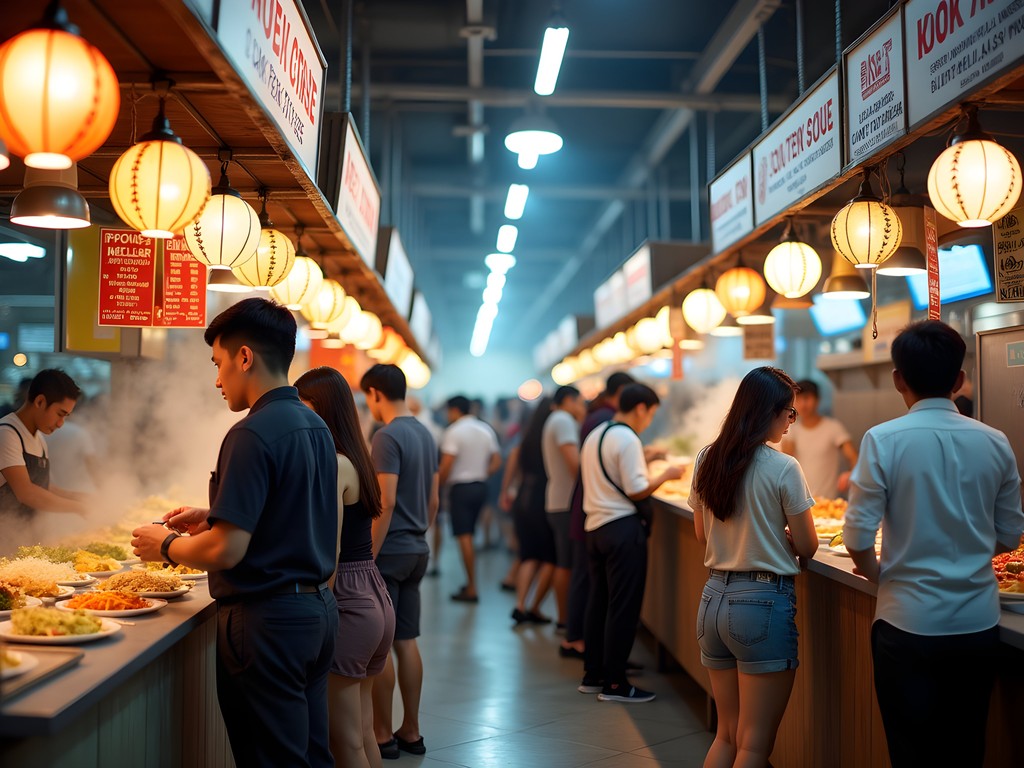
💡 Pro Tips
- Visit during off-peak hours (2-5pm) to avoid crowds
- Always carry tissues or napkins as they're rarely provided
- Don't 'chope' (reserve) tables with tissue packets until you've ordered your food
10 Iconic Dishes You Must Try
Singapore's culinary identity is a magnificent fusion of Chinese, Malay, Indian, and Peranakan influences. These ten dishes represent the essential hawker center experience:
1. Hainanese Chicken Rice Singapore's unofficial national dish – poached chicken served with fragrant rice cooked in chicken stock, accompanied by chili sauce, ginger paste, and dark soy sauce. Deceptively simple, impossibly good.
2. Laksa A spicy coconut milk-based noodle soup with prawns, fishcake, and cockles. The version at 328 Katong Laksa made me sweat through my shirt and immediately order a second bowl.
3. Char Kway Teow Flat rice noodles stir-fried with soy sauce, chili, cockles, Chinese sausage, bean sprouts, and egg. The slight char from the wok gives it that addictive smoky flavor.
4. Chili Crab Hard-shell crabs smothered in a sweet-spicy tomato and chili sauce. It's messy eating that requires both hands and possibly a bib. Pro tip: order mantou (fried buns) to sop up the sauce.
5. Satay Skewers of grilled meat served with peanut sauce, cucumber, and rice cakes. Perfect with a cold Tiger beer on a humid evening.
6. Carrot Cake (Chai Tow Kway) Despite the name, this contains no carrots – it's made from radish cake stir-fried with eggs, preserved radish, and dark soy sauce. Comes in 'white' or 'black' varieties.
7. Roti Prata Indian-influenced flatbread served with curry. The tissue prata (thin, crispy version) at Springleaf Prata Place changed my understanding of what bread can be.
8. Hokkien Mee Stir-fried noodles with prawns, squid, pork belly, and bean sprouts in a rich prawn stock. Always served with sambal chili and a lime wedge.
9. Bak Kut Teh Pork rib soup with herbs and spices. The perfect breakfast after a late night out.
10. Ice Kachang A mountain of shaved ice topped with sweet red beans, jelly, sweet corn, and colorful syrups. The perfect antidote to Singapore's heat.
I always keep my portable utensil set handy for hawker center dining. Many stalls provide disposable chopsticks, but having your own reusable set with a case is both environmentally friendly and more comfortable to use.
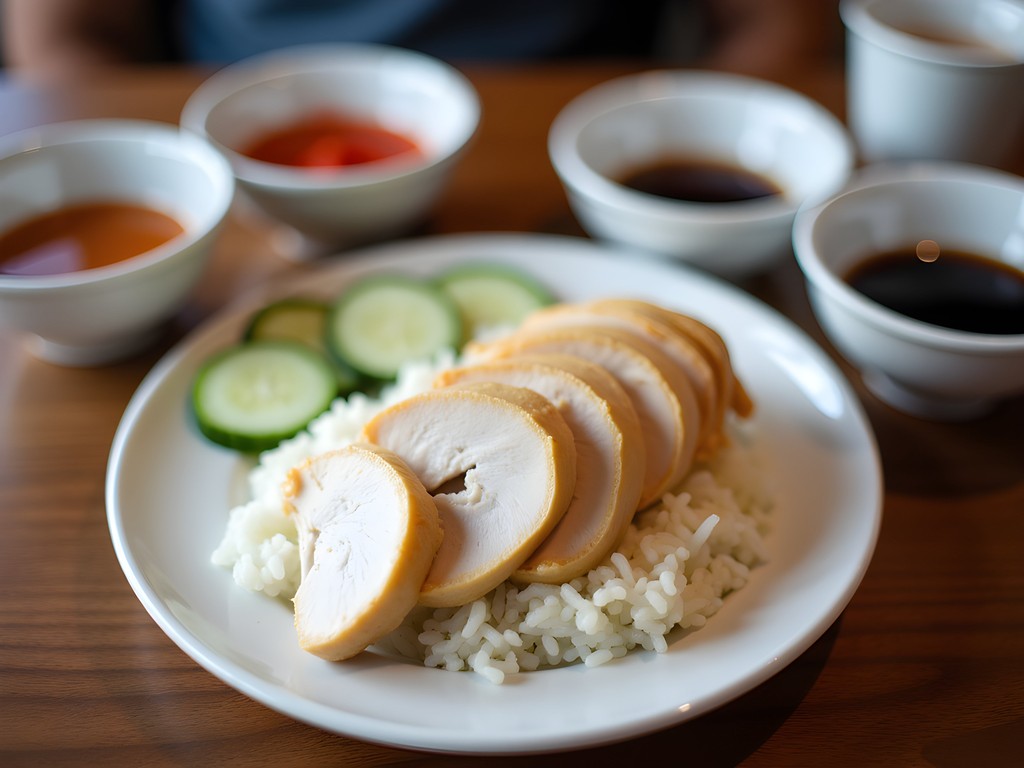
💡 Pro Tips
- Don't be afraid to ask stall owners for recommendations – most are proud to explain their specialties
- Start with milder dishes before tackling the spicy ones
- Order dishes from different stalls to create your own perfect meal
Hawker Center Etiquette: How to Eat Like a Local
Nothing marks you as a tourist faster than being confused by hawker center protocols. Here's how to navigate like a seasoned diplomat:
The Chope System Singaporeans have a unique table reservation system called 'chope' (from 'chopping' or claiming something). People place tissue packets or other small items on tables to reserve them. Respect this system – a table with tissues is taken, even if empty.
Ordering Process Unlike restaurants, you order and pay directly at each stall, then carry your food to your table. Some popular stalls have queues and numbering systems – take a number and wait your turn. Stall owners will often shout when your order is ready.
Payment Most stalls are cash-only, though some newer centers have embraced cashless payments. Always have small bills and coins ready. Prices are clearly displayed, and haggling is not part of the culture.
Sharing Tables During busy periods, sharing tables with strangers is normal and expected. Just ask politely, "Can I sit here?" before joining an occupied table. This has led to some of my most interesting conversations in Singapore.
Cleaning Up In most centers, you're expected to return your tray and dishes to designated collection points. Some older centers still have cleaners (often elderly 'aunties' and 'uncles'), but the government is transitioning to a self-clearing system.
Water and Drinks Most centers have dedicated beverage stalls selling everything from fresh sugar cane juice to local coffee (kopi) and tea (teh). My addiction to teh tarik (pulled tea with condensed milk) is well-documented among my embassy colleagues.
When exploring multiple hawker centers in Singapore's heat, I always bring my insulated water bottle. It keeps water cold all day, which is essential in Singapore's perpetual summer climate.

💡 Pro Tips
- Learn basic food terms in Singlish (Singaporean English) like 'dabao' (takeaway)
- Meals rarely cost more than $5-7 SGD per dish
- Look for stalls with Heritage Hawker signs – these are officially recognized for their cultural significance
Beyond the Food: The Cultural Significance of Hawker Centers
As a Foreign Service Officer, I'm trained to look beyond the surface of cultural institutions, and hawker centers reveal much about Singapore's national identity.
These bustling food hubs represent Singapore's multicultural foundation in microcosm – Chinese, Malay, Indian, and Peranakan traditions don't just coexist but actively influence each other. A Chinese stall might incorporate Indian spices; a Malay dish might feature Chinese cooking techniques. This culinary cross-pollination mirrors Singapore's broader social fabric.
Hawker centers also embody Singapore's pragmatic approach to governance. When street food was creating public health and congestion issues in the 1960s, rather than simply banning vendors, the government created a structured system that preserved the food culture while addressing hygiene concerns.
Perhaps most importantly, these spaces represent a democratic ideal in a country often criticized for its economic stratification. In hawker centers, everyone – regardless of wealth or status – eats the same food at the same tables. The CEO of a multinational corporation might be sitting beside a taxi driver, both enjoying identical plates of char kway teow.
During my posting here, I've witnessed firsthand how fiercely Singaporeans protect this heritage. When UNESCO recognized Singapore's hawker culture as an Intangible Cultural Heritage in 2020, the national pride was palpable. Yet there's constant concern about the future of hawker culture as younger generations pursue other career paths.
Many veteran hawkers are in their 60s and 70s, having spent decades perfecting single dishes. Some stalls have multi-hour queues and international fame, yet operate on razor-thin margins. Organizations like the Hawker Academy now work to preserve these culinary traditions by training a new generation.
For visitors seeking authentic cultural experiences beyond the glossy shopping malls and manufactured attractions, hawker centers offer something increasingly rare in our globalized world – a genuine, unfiltered glimpse into the soul of a place.
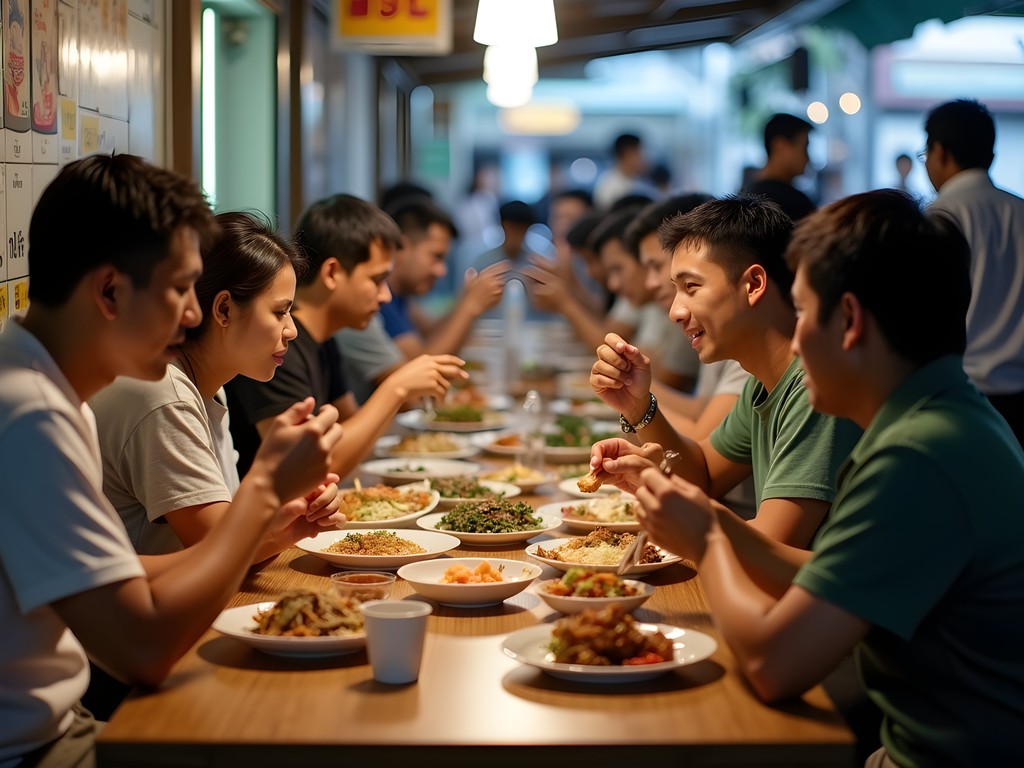
💡 Pro Tips
- Visit the Singapore Food Festival (July) to experience special hawker events
- Download the Makan Buddy app to find top-rated hawker stalls near you
- Look for the 'Hawker Heritage' plaques that tell the stories behind multi-generational stalls
Final Thoughts
As someone who's scaled mountains and jumped off bridges in pursuit of adrenaline rushes, I never expected my most exhilarating Singapore experiences to involve sitting on plastic chairs under fluorescent lights. Yet hawker centers have given me a deeper understanding of this island nation than any official briefing or cultural orientation ever could. They're living museums where recipes passed through generations continue to evolve, where the boundaries between different cultural traditions blur deliciously, and where $5 can buy you a Michelin-worthy meal. Whether you're planning a dedicated food tour or just passing through Singapore, make hawker centers the cornerstone of your culinary exploration. Come hungry, bring cash, follow the locals, and prepare to sweat – both from the humidity and the chili. Your taste buds will thank you, and you'll leave understanding Singapore in a way no shopping mall or tourist attraction could ever reveal.
✨ Key Takeaways
- Hawker centers offer Singapore's best food experiences at incredibly affordable prices
- Follow locals to find the best stalls and be willing to wait in line for exceptional dishes
- Learn basic hawker etiquette like the 'chope' system to navigate like a local
- Embrace the heat, the crowds, and the communal dining for an authentic cultural experience
📋 Practical Information
Best Time to Visit
year-round (indoor/covered facilities)
Budget Estimate
$3-7 SGD per dish
Recommended Duration
1 week to sample multiple centers
Difficulty Level
Beginner




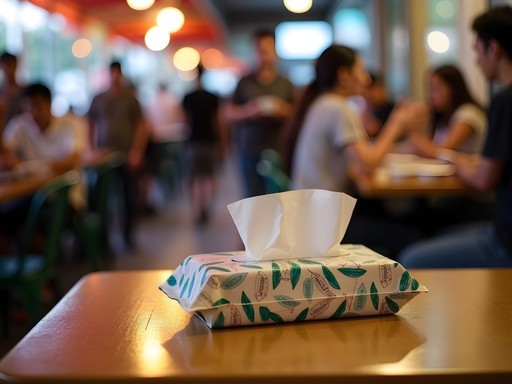
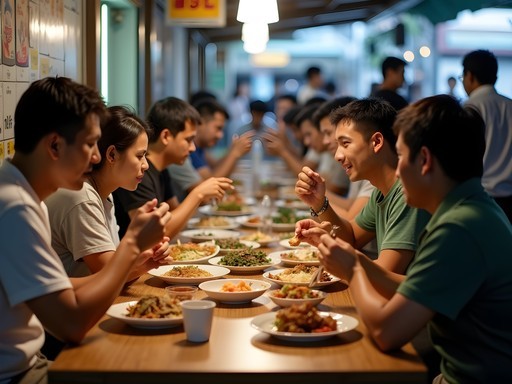





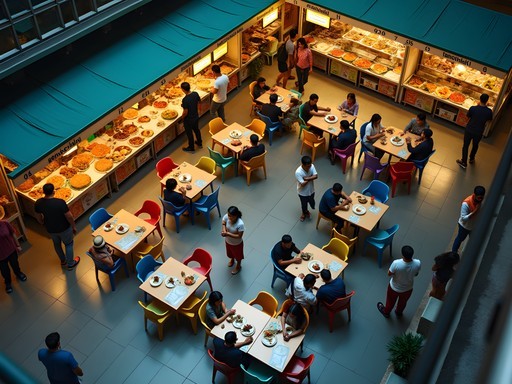
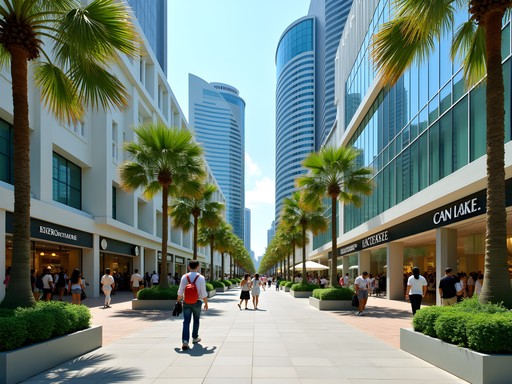
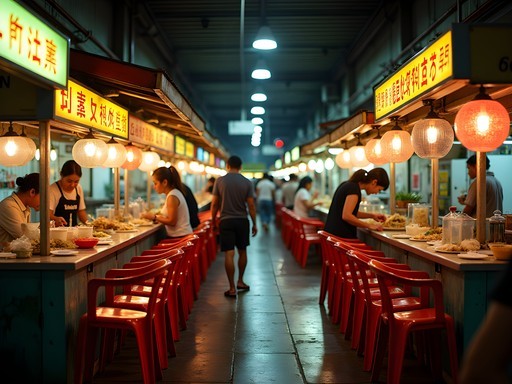
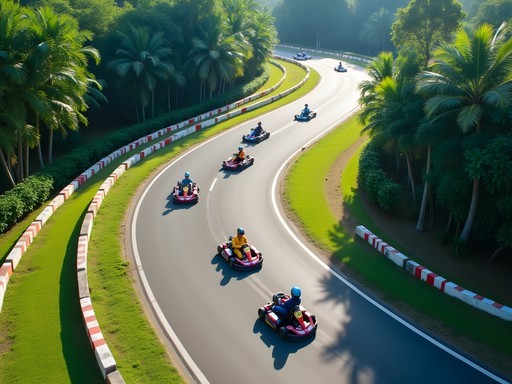

Comments
Sage Dixon
Scarlett, you've captured the hawker center experience perfectly! I still dream about the laksa I had at Chinatown Complex. What really struck me was how these centers bring together people from all walks of life - I sat between a businessman in a tailored suit and a construction worker on his break, all of us hunched over our bowls with the same look of food bliss. One adventure I had that wasn't in your guide: I asked a local taxi driver where HE eats, not where tourists go. He took me to Berseh Food Centre, which wasn't on my radar at all. There was hardly any English spoken, lots of pointing and smiling, and I ended up with the best Char Kway Teow of my life from a stall run by an elderly couple who've been cooking the same dish for 40 years. Sometimes the less Instagrammable places have the most incredible food!
backpacklover
That's such a great idea to ask taxi drivers for recommendations! Definitely doing this on my trip.
globevibes
Just got back from Singapore and used this guide extensively - thank you! One thing to add: don't miss the dessert stalls! The ice kachang and chendol are perfect after spicy food in that humidity. Also, we found that hawker centers were super budget-friendly compared to restaurants. Our family of four ate like kings for under $30 total most meals.
Megan Martin
As someone who regularly travels to Singapore for business, hawker centers are my secret weapon for client entertainment. Nothing impresses international visitors more than taking them to these authentic food havens instead of the typical corporate restaurants. I'd add one practical tip to your excellent guide - download the TraceTogether app before you go, as some centers still use it for busy stalls. Also, bring a small pack of tissues as they're handy for reserving your seat (the local 'chope' custom) and for wiping down after those deliciously messy meals. I always keep my pocket translator handy for some of the less touristy stalls where English menus might be limited.
tripstar
Great tip about the tissues! I learned that one the hard way after awkwardly standing around looking for a seat while locals had efficiently marked theirs.
backpacklover
Those food pics are making me hungry! Definitely saving this for my trip next year!
vacationking
Going to Singapore next month for the first time. Is it easy to find vegetarian options at these hawker centers? Any specific stalls you'd recommend?
globevibes
Not the author but I was there recently as a vegetarian! Look for Indian stalls - they often have great veg options. Also, many Chinese stalls can make dishes without meat if you ask. There's a famous stall at Tekka Centre called Anjappar that has amazing vegetarian South Indian food.
vacationking
Thanks so much for the tip! Will definitely check out Tekka Centre then.
tripstar
This post brings back so many memories! I spent a week in Singapore last year and hit up 3 of the 5 hawker centers you mentioned. Maxwell was my absolute favorite - that Hainanese chicken rice from Tian Tian is seriously life-changing. One tip I'd add: go during off-peak hours if possible. We went to Lau Pa Sat around 3pm one day and it was so much easier to find seating than during the lunch rush. Also, don't be afraid to share tables with locals - everyone does it and we had some great conversations that way!
Sage Dixon
Totally agree about Maxwell! Tian Tian always has a line for a reason. Did you try the carrot cake (which isn't actually carrot or cake) at any of the centers? That was my unexpected favorite dish.
tripstar
Yes! I had the white carrot cake at Old Airport Road and it blew my mind. So different from what I expected but absolutely delicious!
noodlelover99
Pro tip: go to hawker centers during off-peak hours (like 3-5pm) if you're intimidated by crowds. You'll get more attention from the vendors and they might even chat with you about their food!
coffeemate
Great idea! Adding this to my Singapore strategy.
WorldExplorer22
Pro tip for first-timers: hawker centers get SUPER hot during midday. Best to go early morning or evening if you're not used to the heat. The Newton Food Centre has better ventilation than most though!
SingaporeLocal88
100% agree! Newton is more tourist-friendly but slightly pricier. Locals tend to prefer Tiong Bahru or Old Airport Road for better prices.
travelbuddies2023
What's the deal with the 'chope' tissues? Is it really rude to take a seat that has tissues on it?
Scarlett King
Absolutely! The tissue packet 'chope' system is sacred in Singapore. Those tissues/napkins mean the seat is taken, even if no one is physically there. It's how people reserve seats while ordering. Respect the chope! 😊
waveace
Those chili crab photos are making me drool! Def trying that next time.
Venture X
Premium card with 2X miles, $300 travel credit, Priority Pass